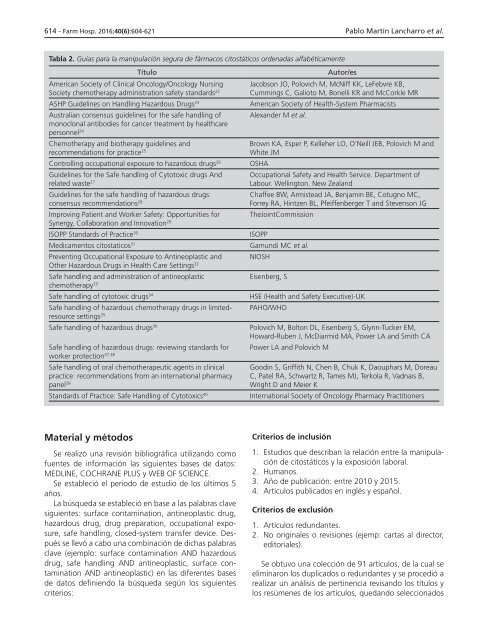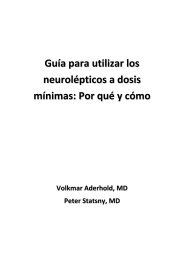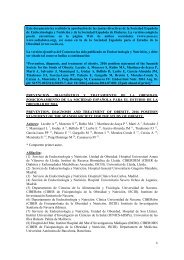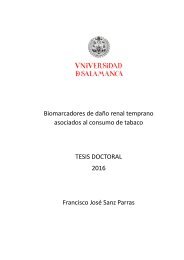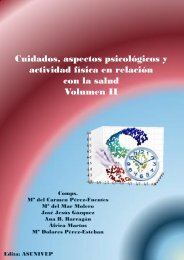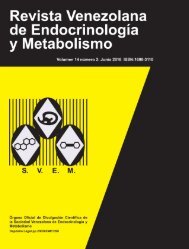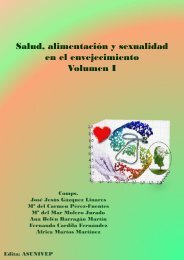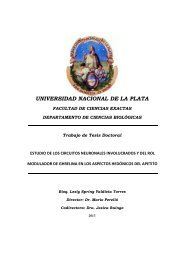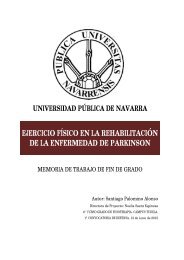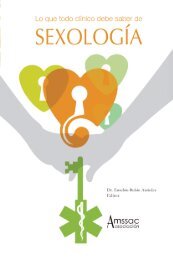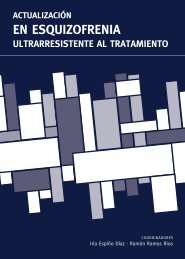Noviembre-Diciembre
156_v40n6(1)
156_v40n6(1)
You also want an ePaper? Increase the reach of your titles
YUMPU automatically turns print PDFs into web optimized ePapers that Google loves.
614 - Farm Hosp. 2016;40(6):604-621 Pablo Martín Lancharro et al.<br />
Tabla 2. Guías para la manipulación segura de fármacos citostáticos ordenadas alfabéticamente<br />
Título<br />
American Society of Clinical Oncology/Oncology Nursing<br />
Society chemotherapy administration safety standards 22<br />
ASHP Guidelines on Handling Hazardous Drugs 23<br />
Australian consensus guidelines for the safe handling of<br />
monoclonal antibodies for cancer treatment by healthcare<br />
personnel 24<br />
Chemotherapy and biotherapy guidelines and<br />
recommendations for practice 25<br />
Controlling occupational exposure to hazardous drugs 26<br />
Guidelines for the Safe handling of Cytotoxic drugs And<br />
related waste 27<br />
Guidelines for the safe handling of hazardous drugs:<br />
consensus recommendations 28<br />
Improving Patient and Worker Safety: Opportunities for<br />
Synergy, Collaboration and Innovation 29<br />
ISOPP Standards of Practice 30<br />
Medicamentos citostaticos 31<br />
Preventing Occupational Exposure to Antineoplastic and<br />
Other Hazardous Drugs in Health Care Settings 32<br />
Safe handling and administration of antineoplastic<br />
chemotherapy 33<br />
Safe handling of cytotoxic drugs 34<br />
Safe handling of hazardous chemotherapy drugs in limitedresource<br />
settings 35<br />
Safe handling of hazardous drugs 36<br />
Safe handling of hazardous drugs: reviewing standards for<br />
worker protection 37,38<br />
Safe handling of oral chemotherapeutic agents in clinical<br />
practice: recommendations from an international pharmacy<br />
panel 39<br />
Standards of Practice: Safe Handling of Cytotoxics 40<br />
Autor/es<br />
Jacobson JO, Polovich M, McNiff KK, LeFebvre KB,<br />
Cummings C, Galioto M, Bonelli KR and McCorkle MR<br />
American Society of Health-System Pharmacists<br />
Alexander M et al.<br />
Brown KA, Esper P, Kelleher LO, O’Neill JEB, Polovich M and<br />
White JM<br />
OSHA<br />
Occupational Safety and Health Service. Department of<br />
Labour. Wellington. New Zealand<br />
Chaffee BW, Armistead JA, Benjamin BE, Cotugno MC,<br />
Forrey RA, Hintzen BL, Pfeiffenberger T and Stevenson JG<br />
TheJointCommission<br />
ISOPP<br />
Gamundi MC et al.<br />
NIOSH<br />
Eisenberg, S<br />
HSE (Health and Safety Executive)-UK<br />
PAHO/WHO<br />
Polovich M, Bolton DL, Eisenberg S, Glynn-Tucker EM,<br />
Howard-Ruben J, McDiarmid MA, Power LA and Smith CA<br />
Power LA and Polovich M<br />
Goodin S, Griffith N, Chen B, Chuk K, Daouphars M, Doreau<br />
C, Patel RA, Schwartz R, Tames MJ, Terkola R, Vadnais B,<br />
Wright D and Meier K<br />
International Society of Oncology Pharmacy Practitioners<br />
Material y métodos<br />
Se realizó una revisión bibliográfica utilizando como<br />
fuentes de información las siguientes bases de datos:<br />
MEDLINE, COCHRANE PLUS y WEB OF SCIENCE.<br />
Se estableció el periodo de estudio de los últimos 5<br />
años.<br />
La búsqueda se estableció en base a las palabras clave<br />
siguientes: surface contamination, antineoplastic drug,<br />
hazardous drug, drug preparation, occupational exposure,<br />
safe handling, closed-system transfer device. Después<br />
se llevó a cabo una combinación de dichas palabras<br />
clave (ejemplo: surface contamination AND hazardous<br />
drug, safe handling AND antineoplastic, surface contamination<br />
AND antineoplastic) en las diferentes bases<br />
de datos definiendo la búsqueda según los siguientes<br />
criterios:<br />
Criterios de inclusión<br />
1. Estudios que describan la relación entre la manipulación<br />
de citostáticos y la exposición laboral.<br />
2. Humanos.<br />
3. Año de publicación: entre 2010 y 2015.<br />
4. Artículos publicados en inglés y español.<br />
Criterios de exclusión<br />
1. Artículos redundantes.<br />
2. No originales o revisiones (ejemp: cartas al director,<br />
editoriales).<br />
Se obtuvo una colección de 91 artículos, de la cual se<br />
eliminaron los duplicados o redundantes y se procedió a<br />
realizar un análisis de pertinencia revisando los títulos y<br />
los resúmenes de los artículos, quedando seleccionados


